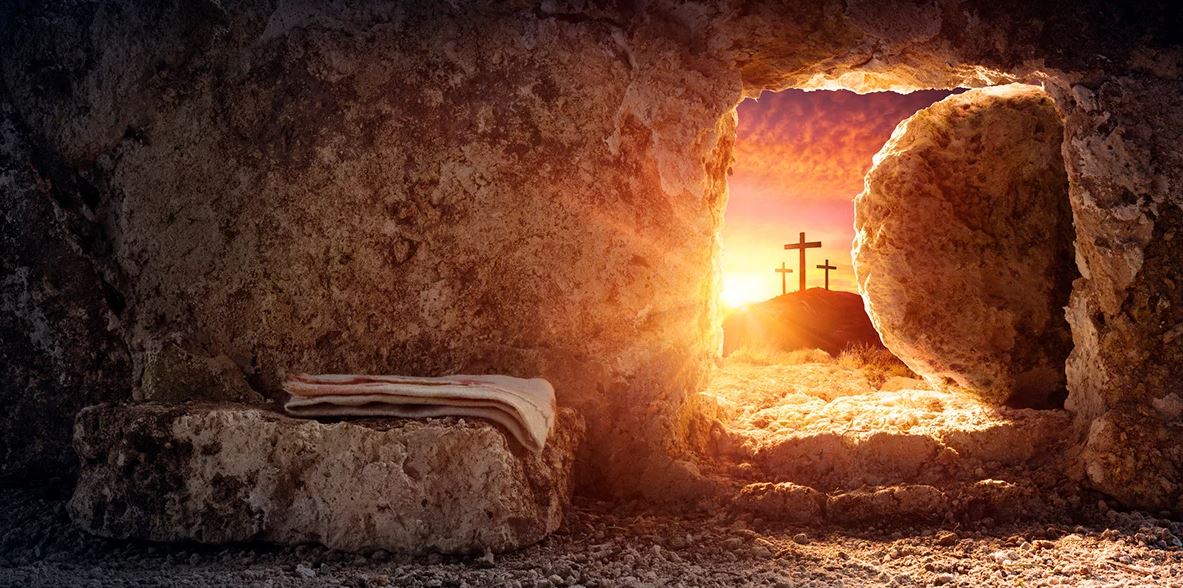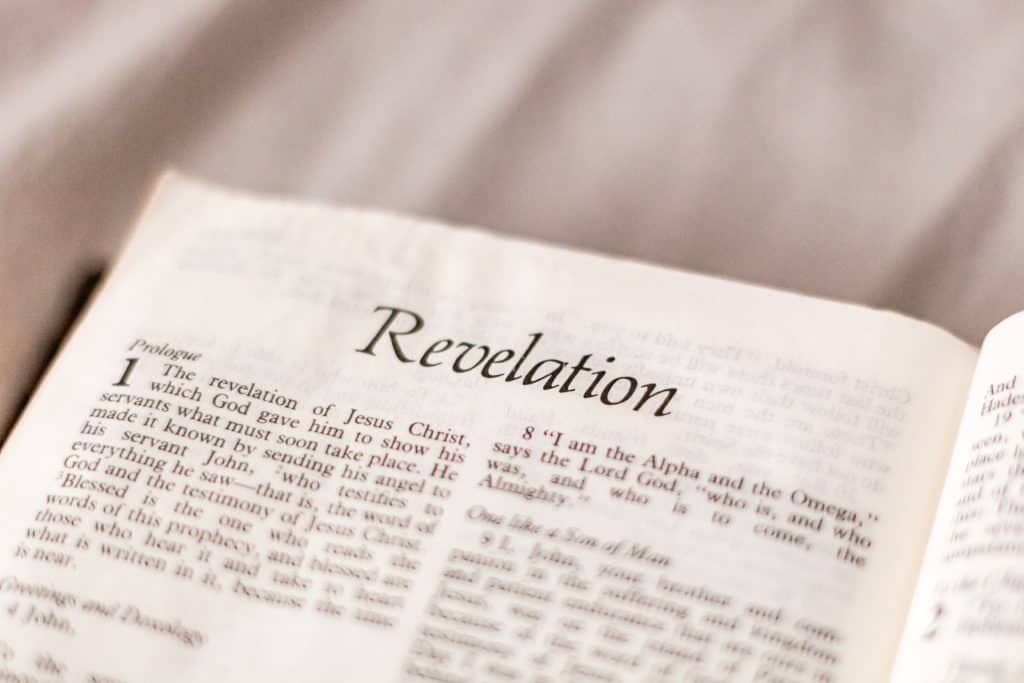Jesus wanted people to believe in Him. His words and works showed them he was worthy of their faith. He performed miracles by healing the blind, the lame, the deaf, and people who suffered from hopeless mania. He showed his authority over nature by calming a storm and the sea. He raised people from the dead.
Lazarus, his friend, had been deceased for days, and the odor of decomposition was present. Jesus still brought him back to life. However, the most potent demonstration that proved Christ’s claim to be the Messiah, the Son of God, who holds the keys to life and death, was his own physical resurrection.
In The 10 Most Common Objections to Christianity, apologist Alex McFarland rightly contends, “The truth of the resurrection is a central question … anyone wanting to disprove Christianity would have to discredit the historicity of this event. Put simply, either the resurrection happened, and Jesus is who he claimed to be, or it didn’t, and we are under no obligation to any of his teachings or example.”
In the book of Acts, Luke told Theophilus that after Jesus suffered and died, the Master proved he was alive again. The doctrine of the resurrection of Christ is bolstered with much evidence that makes it deserving of acceptance and faith. Here are seven pieces of evidence for the resurrection of Christ.
1. The empty tomb of Jesus. J.N.D. Anderson, attorney, and professor of Oriental law at the University of London, said:
“The empty tomb stands as a veritable rock, as an essential element, in the evidence for the resurrection. To suggest that it was not, in fact, empty at all, as some have done, seems to me ridiculous. It is a matter of history that the apostles from the very beginning made many converts in Jerusalem, hostile as it was, by proclaiming the glad news that Christ had risen from the grave — and they did it a short walk from the sepulcher. Any one of their hearers could have visited the tomb and come back again between lunch and whatever may have been the equivalent of an afternoon tea. Is it conceivable, then, that the apostles would have had this success if the body of the one they proclaimed as risen Lord was all the time decomposing in Joseph’s tomb? Would a great company of the priests and many hard-headed Pharisees have been impressed with the proclamation of a resurrection which was, in fact, no resurrection at all but a mere message of spiritual survival couched in the misleading terms of a literal raising from the grave?” (As quoted by Josh McDowell in New Evidence that Demands a Verdict)
Christ’s body surely could not have been stolen or rifled by an outside party. A Roman military guard was posted to prevent that very thing from happening. They would have no reason to steal or collaborate with anyone to take Jesus’ body. To have done so would have jeopardized their own lives. They would have been executed for it. The authorities instructed the guards to say they were asleep and that the body of Jesus had been stolen. But how could they know this if they were asleep?
Moreover, the tomb was sealed by a two-ton stone. It’s absurd to think anyone could have overcome the guards, moved the massive rock, removed the body, and slipped away into the night without being noticed. And, when one considers the disciples had been trembling in fear and hiding, having fled when Jesus was arrested in Gethsemane, the claim is irrational and silly.
The Scripture says: “He isn’t here! He is risen from the dead, just as He said would happen. Come, see where his body was lying (Matthew 28:6). So, they went in, but they didn’t find the body of the Lord Jesus” (Luke 24:3).
Please subscribe to our newsletter for Kenyan and International Christian news, encouraging testimonies, devotions, podcasts and updates from Family Media.
We promise to send you an email only once a week.
2. The record of Jesus’ appearances. The empty tomb alone, however, doesn’t prove Jesus’ resurrection more than a body missing from the morgue would. Keep in mind, in the beginning, the women who went to Jesus’ tomb and His disciples had doubts about what had happened to him. But it was Jesus’ post-resurrection appearances that ultimately convinced each of them that He was alive.
McFarland has listed the recorded appearances of Jesus and their Scripture references.
- To Mary Magdalene (John 20:11).
- To “the other” women (Matt. 28:9-10).
- To Peter (Lk. 24:34).
- To two disciples (Lk. 24:13-32).
- To 10 apostles (Lk. 24:33-49).
- To Thomas and the other apostles (Jn. 20:26-30).
- To seven apostles (Jn. 21:1-23).
- To all the apostles (Mt. 28:16-20).
- To all the apostles again (Acts 1:4-9).
- To 500 brethren at once (I Cor. 15:6).
- To James (I Cor. 15:7)
- To Paul (I Cor. 15:7).
(As Listed in McFarland’s 10 Objections)
We could also add:
- To Stephen (Acts 7:55)
- To John on the Isle of Patmos (Revelation 1:10-19).
J.N.D. Anderson explains the significance of these physical appearances of Christ, saying:
“The most drastic way of dismissing the evidence [of Christ’s resurrection] would be to say that these stories [about his appearances] were mere fabrications, that they were pure lies. But, so far as I know, not a single critic today would take such an attitude. In fact, it would really be an impossible position. Think of the number of witnesses, men, and women who gave the world the highest ethical teachings it has ever known and who, even on the testimony of their enemies, lived it out in their lives. Think of the psychological absurdity of picturing a little band of defeated cowards cowering in an upper room one day and a few days later transformed into a company that no persecution could silence — and then attempting to attribute this dramatic change to nothing more than a miserable fabrication they were trying to foist upon the world. That simply wouldn’t make sense.” (As quoted by Josh McDowell in New Evidence that Demands a Verdict)
The resurrected Christ is a historical fact. After returning to life, Jesus could be seen, touched, and witnessed eating food with others (Acts 1:3-8; Luke 24:44-49). This is verified by more than a sufficient number of witnesses. In today’s law courts, such witnesses would prove a case beyond a reasonable doubt.
3. The integrity of the Gospel narratives. The late Dr. James Montgomery Boice, once the senior pastor of Philadelphia’s historic Tenth Presbyterian Church, lists the descriptions of Jesus’ resurrection as significant evidence. In his commentary on The Gospel of John, Boice writes:
“These [narratives] stand up to the most stringent of critical scrutinies. To begin with, they are apparently four independent accounts [The Gospel accounts: Matthew, Mark, Luke, John]. They were obviously not made up in collusion; for if they were, they would not possess the number of apparent contradictions they contain: the number of angels at the tomb, the number of women who went to the garden, the time of the arrival, and other things. These accounts can be harmonized, but the point is this: had the writers gotten together to make up a story, the apparent discrepancies would have been eliminated. On the other hand, it is also apparent that they did not make up the stories separately, for if they had done this, there would have never been the large measure of agreement they possess. The setting and the characters are the same, and the sequence of events makes sense. What does this mean? Just this: If the accounts were not made up in collusion and if they were not made up separately, the only remaining possibility is that they were not made up at all. That is, they are four true, independent accounts [of Christ’s resurrection] by those who knew the facts they wrote.”
The four independent resurrection narratives are found in Matthew 28:1-10; Mark 16:1-8; Luke 24:1-10; John 20:1-18.
4. The existence of the Christian Church. William Evans was one of the foremost Bible teachers in the early 20th Century. Evans authored 40 books on biblical interpretation and taught at Moody Bible Institute in Chicago. In his book, The Great Doctrines of the Bible, he wrote:
“We know what a grand and noble institution the Christian Church is. What would this world be without it? Its hymns, worship, philanthropy, ministrations of mercy are all known to us. Where did this institution come from? It is an effect, a glorious effect; what is its cause? When the risen Christ appeared unto the discouraged disciples and revived their faith and hope, they went forth, under the all-conquering faith in a risen and ascended Lord, and preached the story of his life, death, resurrection, ascension, and coming again. Men believed these teachings; gathered themselves together to study the Scriptures, to pray, to worship Christ, and to extend His kingdom among men. This is how the Church came into existence. Its cause was the resurrection of Christ.”
Trusted apologist Josh McDowell in New Evidence that Demands a Verdict, has written:
“The Church is a fact of history. The explanation for the existence of the Church is its faith in the resurrection. Throughout its early years, this institution suffered much persecution from the Jews and Romans. Individuals suffered torture and death for their Lord only because they knew he had risen from the grave.”
The tremendous Christian scholar Harold Wilmington states in Wilmington’s Guide to the Bible:
“In less than 50 years after Christ’s death, the Christian Church had become a mighty power, causing the Roman government to view its influence upon men and women with growing concern. Legends and religions simply do not develop this quickly.”
We live in a time when much of the Church has been seriously compromised on sound doctrine, embracing what the apostle Paul called “doctrines of devils” (I Tim. 4:1). Sin, corruption, and worldliness are inside the Church. Numerous clergy members have fallen into sexual immorality, abusing their clout by sexually assaulting women and children. Unbelief and immoral behavior have seriously diminished the witness of today’s Church.
Nevertheless, the Church has still produced unprecedented good throughout the world. The late Dr. D. James Kennedy and Jerry Newcomb, in What if Jesus Had Never Been Born, disclosed the many ways the Church has had an unparalleled impact for good on world history: the value of human life, helping the poor, education for the masses, the founding of America, civil liberties, science, economics, the family, medicine, morality, and the arts and music. It isn’t hyperbole to say every major advancement of humanity has come about because of Christianity and the ministries of Christ’s Church.
This incomparable power to transform the world for good is because the Church believes in a living Christ. The Church has held that the same power which raised Jesus from the dead enables Christ’s followers to do the impossible.
5. Sabbath changed to Christian Sunday. Boice has written that “one of the great evidences of the resurrection is the unexpected and unnatural change of the day of worship from Saturday, the Jewish day of worship, to Sunday in Christian services. Nothing but the resurrection of Jesus on Sunday explains it.” (As quoted in Boice’s commentary on The Gospel of John)
McDowell further illuminates the claim, arguing:
“The Sabbath is one of the supporting columns of Judaism. One of the most reverent things in the life of a Jew was the keeping of the Sabbath. The Christians met on the first day of the Jewish week in the acknowledgment of the resurrection of Jesus. These Christians actually succeeded in moving to Sunday, this age-old and theologically-backed day of rest and worship. Yet remember, THEY WERE JEWS THEMSELVES! Keeping in mind what they thought would happen if they were wrong, we must recognize that this was probably one of the biggest decisions any religious body of men has ever made!! How are we to explain the change from Saturday to Sunday worship without the resurrection?” (As quoted in McDowell’s New Evidence that Demands a Verdict)
McFarland provides a brief list of historical authorities outside the Bible who affirm that celebrating Christ’s resurrection and the change to worshiping from Saturday to Sunday were connected.
- Pliny, a Roman Governor in Asia Minor (A.D. 107).
- Ignatius in his epistle (in about A.D. 145-150).
- Justin Martyr (A.D. 150).
- Irenaeus (A.D. 155-202).
- Clement of Alexandria, Et (A.D. 194).
- Tertullian of Africa (A.D. 200).
(As Listed in McFarland’s 10 Objections)
The Bible says, “on the first day of the week, we gathered with the local believers to share in the Lord’s Supper. Paul was preaching to them, and since he was leaving the next day, he kept talking until midnight” (Acts 20:7). “On the first day of each week, you should each put aside a portion of the money you have earned. Don’t wait until I get there and then try to collect it all at once” (I Cor. 16:2).
6. The creation of the New Testament. Again, we reference Evans for this point. He writes:
“If Jesus Christ had remained buried in the grave, the story of his life and death would have remained buried with him. The New Testament is an effect of Christ’s resurrection. It was the resurrection that put heart into the disciples to go forth and tell its story. Skeptics would have us believe that the resurrection of Christ was an afterthought of the disciples to give the story of Christ’s life a thrilling climax, a decorative incident that satisfies the dramatic feeling in man, a brilliant picture at the end of a heroic life. We reply: There would have been no beautiful story to put a climax to if there had been no resurrection of the Christ of the story. The resurrection does not grow out of the beautiful story of his life, but the beautiful story of Christ’s life grew out of the fact of the resurrection. The New Testament is the book of the resurrection.” (Evans, Great Doctrines of the Bible)
Indeed! What meaning would any of the teachings of the New Testament have without the literal resurrection of Jesus from the grave? The New Testament contains the most beautiful story and the most sublime teachings in the world. The authenticity of the New Covenant is verified by the Living Word’s defeat of death by his resurrection.
7. The transformation of countless lives. An old story published in the Watchman Examiner says two irreligious men were discussing the resurrection. Both expressed their disbelief to each other when a friend they knew, who was outspoken about his faith, walked by them. In a joking manner, they called to him and asked, “Say, you’re a Christian; tell us why you believe Jesus rose again.” “Well,” he responded, “one answer is that I was talking with Him for half an hour this morning.” Christians experience the proof of Christ’s resurrection in their lives daily. No one who knows Jesus personally questions the resurrection.
Before the resurrection, the disciples of Jesus were scattered and nowhere to be found. However, after the resurrection, they became bold and outspoken in their faith.
A Harvard attorney, Simon Greenleaf, wrote of the disciples: “It was impossible that they could have persisted in affirming the truths they narrated, had not Jesus risen from the dead, and had they not known this fact as certainly as they knew any other fact.” (As quoted in McDowell’s New Evidence)
What about the Christian martyrs? McFarland notes: “The Christian martyrs of the first century did not die for an idea or a promise. They died because they were eyewitnesses to the resurrected Jesus … With the exception of John, the disciples each endured horrific deaths. They were variously crucified, boiled in a vat, and subject to other tortures … No sane person would willingly go through such torment simply to publicly ‘validate’ a lie he had concocted.”
(As quoted in McFarland’s 10 Objections)
What about the millions who testify that a personal experience with Christ radically altered their lives? Vulgar and coarse people changed to pure and compassionate; thieves and materialists changed to philanthropists, alcoholics, drug addicts, compulsive gamblers, and sexual deviants, delivered from their compulsions —marriages and broken families mended by the presence of Christ in the home. The list is endless and can only be understood as the effect of a personal experience with the living Savior, Jesus Christ.







